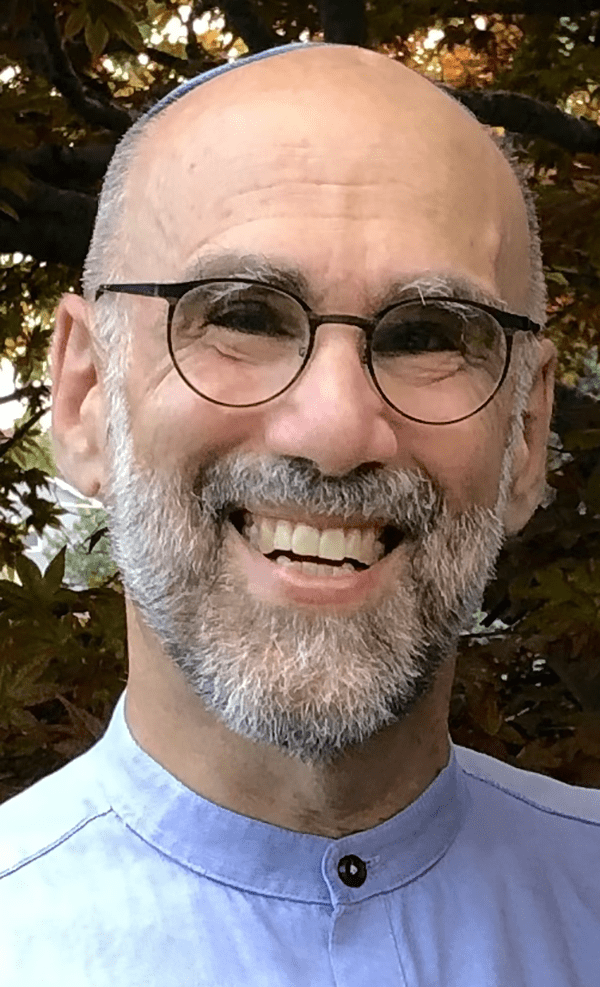Parshat Lech-Lecha 5785
We make assumptions about others based on what we see: what they wear, what they drive, their work, past-times… And we project upon the other who passes our superficial entrance exam what we want them to be — i.e., more like us!
Breath (Yizkor KN5785)
My recent posts...
Can You Hear Me (KN 5785)
My recent posts...
Yom Kippur Singing
My recent posts...Over the decades, I have composed melodies for some of the texts we use in our prayer services. (I've written English interpretations of the texts for a few of them.) Some of them are posted here so we can sing them together at Shirat Hayam and, even...
Siddur Sessions 4 & 5
Fourth and Fifth meetings (Feb 22, March 7)
BOKER TOV — Good morning! We knock on the door of shacharit, the morning service (shachar = dawn) by being called to prayer. But, you say, have we not been praying through birkot hashachar/p’sukei d’zimra? Certainly! However, those parts are generally considered “mere” warmups to the obligatory section that relates to the morning sacrifice in the ancient Temple in Jerusalem.
With barchu, we are summoned, and we respond “yes!” The word barchu has the same root as baruch, i.e., berech, meaning “knee.” Hence, the leader draws attention by bowing on “barchu” and we respond by bowing on the “baruch” of our response.
Rabbi Reuven Hammer writes, “We cannot bless God in the sense of granting God a blessing … baruch is an expression of the highest regard … a way of proclaiming … God’s greatness and glory.” (Or Chadash siddur commentary)
Shema
The Shema and the Amida, together, are the core of the shacharit service.
First, a bracha that harks back to Creation, praising God Who “fashions light and creates darkness, makes peace and creates all.” Doesn’t that last phrase cover everything else? The original text from Isaiah (45:7) has “and creates evil” rather than “creates all.” This is a quandary for our sages of old, and for us! The language of the blessing is that these things are ongoing; does that mean that God is constantly creating evil? However we interpret the text, the bracha language emends those words to a generic inclusivity that reflects the idea that if God creates everything, then so be it. But we don’t have to bemoan evil in our midst as God’s doing!
Next, we travel to celestial realms, where sun and moon “reflect Your glory,” and we speak of how the celestial beings praise God. Then, a recitation of God’s beneficent powers (constantly renewing, sowing righteousness, Sovereign of wonders …) with more light imagery, ending with a bracha lauding God as “Creator of the [celestial] luminaries.”
From those heavenly heights, we express appreciation for the gift of Torah that connects heaven and earth, and we thank God for having chosen us to receive that gift.
Shema: “Hear, O Israel — Adonai is our God, Adonai alone!” This declaration of faith, taken directly from devarim/Deuteronomy 6, is unequivocal and emphatic. The next verses tell us how we are to love our God. How are we to love our God? I count ten ways: 1 – wholeheartedly; 2 – soulfully; 3 – with our full selves; 4 – teaching our children; 5 – talking about God and mitzvot; 6 – when? all the time, any time; 7 – binding ourselves to these ideas physically; 8 – intellectually; 9 – privately; and 10 – publicly.
More Torah text follows, reminding us of the consequences of reneging on our end of the covenant (not good) to the promise of faithfulness (very good) and a mnemonic device (tzitzit, fringes on our garments) to help us not stray.
The transition from Shema to the Amida summarizes our ancestral connections and continuity, through the Exodus to a declaration of peoplehood (“yisrael” is featured five times in the brief prayer before the amida, bolstering the declaration of shema. The final bracha here reminds God that since God redeemed us once (from Egypt), God can help us out of whatever is our current predicament!
Amida
First, we establish a prayer zone for ourselves, and have the umbrage to approach God, by taking three steps forward. We enter the Amida by reminding God and ourselves of our long connection through our biblical ancestors, followed by a summary of God’s beneficent powers. (The phrase “mechayyei meitim, literally, reviver of the dead, is accepted by many as not beyond God’s reach; others interpret it to encompass the reanimation of the moribund or despondent, or nature’s rebirth in spring.
In a minyan, through the kedusha, “sanctification,” we take another trip to the divine realms where we are as though with the celestial beings praising God. (There are some textual differences among kedusha of weekday, Shabbat morning, musaf, festivals….)
In the weekday amida, we encounter a series of brachot that are a mix of appreciation (for wisdom, Torah) and invitation (heal us, restore justice, support the righteous).
On Shabbat and festivals, the shacharit amida text focuses on those sacred events. Likewise the musaf (additional) amida reviews the Temple sacrifices added for those occasions. (Contemporary non-Orthodox siddurim offer an optional animal-free text.) A focus in these amidot is appreciation for the special days that are our legacy, our heritage to maintain through the generations.
Every amida closes with thanks (for the myriad miracles in our lives), a prayer for peace followed by a private prayer, worded in the singular, and another plea for peace — can’t have enough of it!
Next session, we’ll discuss Hallel, the Torah ritual, and how we close out services. There is no session this evening (March 14). See you next Thursday, March 21, for our final session.
Zoom link: https://www.zoom.us/j/932976512. Passcode 7116700. Or, call the office (609-822-7116 x101) for the island location.
Shabbat shalom! שבת שלום


